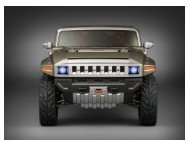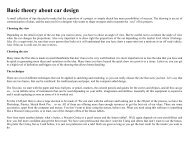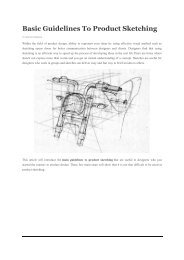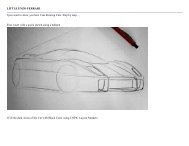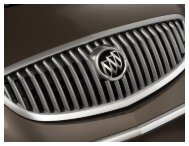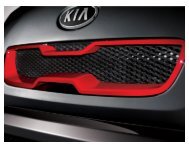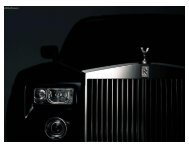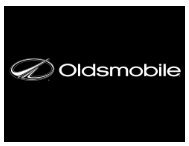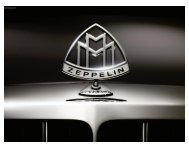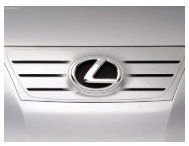Suzuki
Suzuki - ACDAC
Suzuki - ACDAC
- No tags were found...
You also want an ePaper? Increase the reach of your titles
YUMPU automatically turns print PDFs into web optimized ePapers that Google loves.
<strong>Suzuki</strong><br />
<strong>Suzuki</strong> Motor Corporation<br />
Type Public (TYO: 7269)<br />
Founded<br />
Founder(s)<br />
Headquarters<br />
Key people<br />
Industry<br />
Products<br />
1909 (as <strong>Suzuki</strong> Loom Works)<br />
Michio <strong>Suzuki</strong><br />
Hamamatsu, Shizuoka, Japan<br />
Osamu <strong>Suzuki</strong>, Chairman of the Board,<br />
President, CEO, COO and Representative<br />
Director<br />
Automobile<br />
AutomobilesEngines Motorcycles ATVs<br />
Outboard Motors<br />
Revenue ▼$33.46 billion (2008)<br />
Operating<br />
income<br />
▼$856.6 million (2008)<br />
Net income ▼$305.43 million (2008)<br />
Employees 14,266 (2009)<br />
Subsidiaries<br />
• Magyar <strong>Suzuki</strong><br />
• Maruti <strong>Suzuki</strong><br />
• Pak <strong>Suzuki</strong> Motor<br />
Website<br />
Global<strong>Suzuki</strong>.com
<strong>Suzuki</strong> Motor Corporation (スズキ 株 式 会 社 <strong>Suzuki</strong> Kabushiki-Kaisha) is a Japanese multinational corporation headquartered in Hamamatsu, Japan that<br />
specializes in manufacturing compact automobiles, a full range of motorcycles, all-terrain vehicles (ATVs), outboard marine engines, wheelchairs and a variety<br />
of other small internal combustion engines. <strong>Suzuki</strong> is the 9th largest automobile manufacturer in the world by production volume,employs over 45,000 people,<br />
has 35 main production facilities in 23 countries and 133 distributors in 192 countries. "<strong>Suzuki</strong>" is pronounced [suzuki] in Japanese, with a high tone on the [ki].<br />
It is pronounced /səˈzuːki/ sə-ZOO-kee in English, with a stressed zu. This pronunciation is used by the <strong>Suzuki</strong> Company in marketing campaigns directed<br />
towards this demographic.<br />
History<br />
In 1909, Michio <strong>Suzuki</strong> founded the <strong>Suzuki</strong> Loom Works in the small seacoast village of<br />
Hamamatsu, Japan. Business boomed as <strong>Suzuki</strong> built weaving looms for Japan's giant silk<br />
industry.In 1929, Michio <strong>Suzuki</strong> invented a new type of weaving machine, which was<br />
exported overseas. <strong>Suzuki</strong> filed as many as 120 patents and utility model rights.The<br />
company's first 30 years focused on the development and production of these exceptionally<br />
complex machines. Despite the success of his looms, <strong>Suzuki</strong> realized his company had to<br />
diversify and he began to look at other products. Based on consumer demand, he decided that<br />
building a small car would be the most practical new venture. The project began in 1937, and<br />
within two years <strong>Suzuki</strong> had completed several compact prototype cars. These first <strong>Suzuki</strong><br />
motor vehicles were powered by a then-innovative, liquid-cooled, four-stroke, four-cylinder<br />
engine. It featured a cast aluminum crankcase and gearbox and generated 13 horsepower<br />
(9.7 kW) from a displacement of less than 800cc. With the onset of World War II, production<br />
plans for <strong>Suzuki</strong>'s new vehicles were halted when the government declared civilian passenger<br />
cars a "non-essential commodity." At the conclusion of the war, <strong>Suzuki</strong> went back to<br />
producing looms. Loom production was given a boost when the U.S. government approved<br />
the shipping of cotton to Japan. <strong>Suzuki</strong>'s fortunes brightened as orders began to increase from<br />
domestic textile manufacturers. But the joy was short-lived as the cotton market collapsed in<br />
1951. Faced with this colossal challenge, <strong>Suzuki</strong>'s thoughts went back to motor vehicles.<br />
After the war, the Japanese had a great need for affordable, reliable personal transportation. A number of firms began offering "clip-on" gas-powered engines that<br />
could be attached to the typical bicycle. <strong>Suzuki</strong>'s first two-wheel ingenuity came in the form of a motorized bicycle called, the "Power Free." Designed to be<br />
inexpensive and simple to build and maintain, the 1952 Power Free featured a 36 cc, one horsepower, two-stroke engine. An unprecedented feature was the<br />
double-sprocket gear system, enabling the rider to either pedal with the engine assisting, pedal without engine assist, or simply disconnect the pedals and run on<br />
engine power alone. The system was so ingenious that the patent office of the new democratic government granted <strong>Suzuki</strong> a financial subsidy to continue<br />
research in motorcycle engineering, and so was born <strong>Suzuki</strong> Motor Corporation. In 1953, <strong>Suzuki</strong> scored the first of many racing victories when the tiny 60 cc<br />
"Diamond Free" won its class in the Mount Fuji Hill Climb. By 1954, <strong>Suzuki</strong> was producing 6,000 motorcycles per month and had officially changed its name<br />
to <strong>Suzuki</strong> Motor Co., Ltd. Following the success of its first motorcycles, <strong>Suzuki</strong> created an even more successful automobile: the 1955 <strong>Suzuki</strong> Suzulight. <strong>Suzuki</strong><br />
showcased its penchant for innovation from the beginning. The Suzulight included front-wheel drive, four-wheel independent suspension and rack-and-pinion<br />
steering—features common on cars half a century later.<br />
Historical timeline
• 1909 – <strong>Suzuki</strong> Loom Works founded in Hamamatsu, Shizuoka Prefecture, by Mr. Michio <strong>Suzuki</strong>.<br />
• 1920 – Reorganized, incorporated, and capitalized at 500,000 yen as <strong>Suzuki</strong> Loom Manufacturing Co. with Michio <strong>Suzuki</strong> as president.<br />
• 1952 – 'Power Free' motorized bicycle marketed.<br />
• 1954 – Company name changed to <strong>Suzuki</strong> Motor Co.,Ltd.<br />
• 1955 – Lightweight car <strong>Suzuki</strong> Suzulight (360 cc, 2-stroke) front wheel drive, marketed helping to usher in Japan's light-weight car age.<br />
• 1961 – <strong>Suzuki</strong> Loom Manufacturing Co. established by separating the loom machine division from the motor works and lightweight truck 'Suzulight<br />
Carry' marketed.<br />
• 1962 – <strong>Suzuki</strong> won the 50 cc class championship at the Isle of Man TT<br />
• 1963 – U.S. <strong>Suzuki</strong> Motor Corp., a direct sales subsidiary, opened in Los Angeles.<br />
• 1965 – 'D55'(5.5 hp, 2-stroke) outboard motor marketed and makes early inroads and Fronte 800 marketed.<br />
• 1967 – Thai <strong>Suzuki</strong> Motor Co., Ltd. established as a local assembly plant.<br />
• 1968 – Carry full-cab van marketed.<br />
• 1970 – LJ-Series 4X4 marketed.<br />
• 1971 – Ts185 Enduro marketed.<br />
• 1971 – GT750 motorcycle marketed.<br />
• 1973 – <strong>Suzuki</strong> Canada Ltd., opened in Ontario, Canada.<br />
• 1974 – P.T. <strong>Suzuki</strong> Indonesia Manufacturing established in Jakarta, Indonesia, entry into medical equipment field by marketing the <strong>Suzuki</strong> Motor Chair<br />
Z600 motorized wheelchair, expansion into the housing field initiated with <strong>Suzuki</strong> Home marketing two models of prefab 'Mini-House' and three types of<br />
storage sheds.<br />
• 1975 – Antonio <strong>Suzuki</strong> Corp., a joint venture for knockdown production and sales, established in Manila, the Philippines.<br />
• 1976 – GS-Series motorcycles marketed.<br />
• 1977 – LJ80 4x4 vehicle marketed and exports of GS1000H motorcycle began.<br />
• 1979 – Alto marketed.<br />
• 1979 – SC100 marketed in the UK.<br />
• 1980 – <strong>Suzuki</strong> Australia Pty. Ltd. established in Sydney, Australia and entry into general purpose engine field by marketing three electric power generator<br />
models.<br />
• 1981 – Business ties with General Motors (U.S.) and Isuzu Motors, Ltd.(Japan) signed.<br />
• 1982 – 4X4 production began at PAK <strong>Suzuki</strong> Motor Co., Ltd. in Karachi, Pakistan and won maker championship for 7th consecutive year at the World<br />
Road Race Grand Prix 500.<br />
• 1982 – SC100 Discontinued in favour of Alto.<br />
• 1983 – Enters into a partnership with Maruti Udyog Ltd. to produce cars in India.<br />
• 1983 – Cultus/Swift 1.0-liter passenger car marketed and 4X4 production started at Maruti Udyog Ltd. in New Delhi, India.<br />
• 1984 – <strong>Suzuki</strong> New Zealand Ltd. established in Wanganui, New Zealand and began export of Chevrolet Sprint to the United States. Car production<br />
technical assistance contract signed with China National Aerotechnology Import & Export Beijing Corporation. Operation of <strong>Suzuki</strong> Motor GmbH<br />
Deutschland began in Heppenheim,Germany.<br />
• 1985 – SUZUKI of AMERICA AUTOMOTIVE CORP. established with the introduction of the Samurai, and the GSX-R750 motorcycle with an oilcooled<br />
engine marketed and scooter production started at Avello S.A. of Spain. Agreement with Santana Motors to produce <strong>Suzuki</strong> cars in their Linares<br />
factory in Andalusia, Spain.<br />
• 1986 – American <strong>Suzuki</strong> Motor Corp. is formed merging U.S. <strong>Suzuki</strong> Motor Corp and <strong>Suzuki</strong> of America Automotive Corp.<br />
• 1987 – Cultus/Swift production began in Colombia and total aggregate car exports reached 2 million units.
• 1988 – Escudo/Vitara 4x4 marketed and total aggregate car production reached 10 million units..<br />
• 1989 – CAMI Automotive Inc. established and began operation in Ontario, Canada. Swift GT/GLX and Sidekick sales begin in the United States.<br />
• 1990 – Corporate name changed to <strong>Suzuki</strong> Motor Corporation.<br />
• 1991 – Car production started in Korea through technical ties with Daewoo Shipbuilding & Heavy Machinery Ltd and Cappuccino 2-seater marketed.<br />
• 1993 – Passenger car production/sales began at <strong>Suzuki</strong> Egypt S.A.E., opening ceremony for new car production plant held at Magyar <strong>Suzuki</strong> Corp. in<br />
Esztergom, Hungary and Wagon R passenger car marketed.<br />
• 1994 – Maruti Udyog Ltd. of India total aggregate car production reached 1 million units.<br />
• 1995 – Total aggregate motorcycle export reached 20 million units<br />
• 1996 – Start of production in Vietnam (Motorcycles and automobiles)<br />
• 1997 – Achieved 10 million cumulative automobile sales for overseas market and 4-stroke outboard motors win the Innovation Award at The<br />
International Marine Trade Exhibit and Conference (IMTEC) in Chicago.<br />
• 1998 – <strong>Suzuki</strong> and General Motors form strategic alliance and Chongqing Chang'an <strong>Suzuki</strong> Automobile Co., Ltd. received official approval from the<br />
Chinese government for production of passenger cars.<br />
• 1999 – Aggregate motorcycle production reaches 40 million units and Jiangxi Changhe <strong>Suzuki</strong> Automobile Co., Ltd. receives official approval from the<br />
Chinese government for production of commercial vehicles.<br />
• 2000 – The company commemorates the 80th anniversary, aggregate car production at Kosai Plant reaches 10 million units and <strong>Suzuki</strong> production starts<br />
at General Motors de Argentina S.A.<br />
• 2001 – Aggregate Launch of <strong>Suzuki</strong> Liana/Aerio. worldwide sales of SJ-Series reaches 2 million units, production of Alto reaches 4 million units and<br />
<strong>Suzuki</strong> achieves "Zero-Level" target of landfill waste<br />
• 2002 – Achieved 30 million cumulative automobile sales for worldwide market and America's #1 warranty: 100,000/7-year powertrain limited warranty.<br />
• 2003 – <strong>Suzuki</strong> is #1 in Kei car sales for the 30th consecutive year and Twin, the first hybrid Kei car in Japan, marketed.<br />
• 2004 – Aggregate domestic automobile sales reach 15 million units<br />
• 2005 – Swift was awarded the 2006 RJC Car of the Year.<br />
• 2006 – New XL7 is marketed particularly to the North American market; and GM divested, selling 92.36 million shares and reducing their stake to 3%.<br />
• 2008 – <strong>Suzuki</strong> introduces its first production fuel-injected motocross bike; and GM divested its remaining 3% stake in <strong>Suzuki</strong>.<br />
• 2009 – <strong>Suzuki</strong> introduces its first production pickup truck called the Equator. Volkswagen AG and <strong>Suzuki</strong> reach a common understanding to establish a<br />
close long-term strategic partnership. Subject to regulatory approval, Volkswagen will purchase 19.9% of <strong>Suzuki</strong>’s issued shares.<br />
Maruti <strong>Suzuki</strong><br />
Based in Gurgaon, India, Maruti <strong>Suzuki</strong> India Limited is <strong>Suzuki</strong>'s largest and most valuable subsidiary with an annual production of 626,071 units in<br />
2006.<strong>Suzuki</strong> has a 54.2% stake in the Indian auto giant and the rest is owned by the various Indian public and financial institutions. The company was<br />
incorporated in 1981 and is listed on the Bombay Stock Exchange and National Stock Exchange of India.In 2005-2006, the company had a 54% market share of<br />
the passenger car market in India.Nearly 75,000 people are employed directly by Maruti and its partners. Maruti <strong>Suzuki</strong> was born as a Government of India<br />
company, with <strong>Suzuki</strong> as a minor partner, to make a people’s car for middle class India. Over the years, the product range has widened, ownership has changed<br />
hands and the customer has evolved.
Maruti <strong>Suzuki</strong> offers 14 models, ranging from India's one-time best selling car, Maruti 800, for less than INR 200,000 (US$ 5000) to the premium sedan Maruti<br />
<strong>Suzuki</strong> SX4 and luxury SUV, Maruti <strong>Suzuki</strong> Grand Vitara. Maruti 800 was the first model launched by the company in 1983 followed by mini-van Maruti Omni<br />
in 1984. Both models were huge success in their respective categories because of the use of high-end technology and good fuel efficiency. Maruti Gypsy,<br />
launched in 1985, came into widespread use with the Indian Army and Indian Police Service becoming its primary customers. The short-lived Maruti 1000 too<br />
achieved moderate success until it was replaced by Maruti Esteem in 1994, to counter increasing competition in the medium-sedan category.<br />
Maruti Zen, launched in 1993, was the company's second compact car model and also<br />
became extremely popular in India because of its high performance. The company went on to<br />
launch another compact car Maruti Wagon-R followed by Maruti Baleno in 1999. However,<br />
with increasing competition from Tata, Hyundai, Honda and Daewoo Motors, Maruti was not<br />
able to achieve the same success with Wagon-R and Baleno as it had with its earlier<br />
models.So it Replaced Maruti <strong>Suzuki</strong> Baleno with the <strong>Suzuki</strong> SX4 and is going to replace<br />
Wagon-R with <strong>Suzuki</strong> Splash.Currently SX4 is the largest selling car in its segment.<br />
In 2000, Maruti Alto was launched. The launch of Tata Indica and Hyundai Santro had<br />
affected Maruti's sales but Alto helped secure the company's position as the auto leader in<br />
India. It is currently the largest selling car in India. The Maruti models include Maruti <strong>Suzuki</strong><br />
Grand Vitara, launched in 2003, Maruti Versa, launched in 2004, Maruti <strong>Suzuki</strong> Swift,<br />
launched in 2005, Maruti Zen Estilo and Maruti <strong>Suzuki</strong> SX4, launched in 2007. The Alto,<br />
Swift and SX4 are leaders in their respective segments in the Indian Market.<br />
On 14 February, Maruti <strong>Suzuki</strong> India, a <strong>Suzuki</strong> subsidiary in India, announced that it<br />
achieved one million total accumulated production volume of the Alto. The Alto has reached<br />
the million units mark in just seven years and five months since its launch on September<br />
2000. The last half of the million has come in a record 25 months. The Alto has been India's largest volume-selling car, every month, for the past 37 consecutive<br />
months. Its popularity has continued to grow since its launch, with customers attracted to its combination of fuel efficiency, contemporary design and looks and<br />
features including Electronic Power Steering and air-conditioning. With this the Alto became the third car in the Maruti <strong>Suzuki</strong> stable to cross the million units<br />
mark. Previously, the Maruti 800 and the Omni had exceeded the million units mark. Besides its success in India, over 152,000 Altos made at Maruti <strong>Suzuki</strong><br />
were delivered internationally, enjoying good outcomes in Algeria and Chile. Maruti Exports Limited is the subsidiary of Maruti Udyog Limited with its major<br />
focus on exports and it does not operate in the domestic Indian market. The first commercial consignment of 480 cars were sent to Hungary. By sending a<br />
consignment of 571 cars to the same country, Maruti crossed the benchmark of 3,000,000 cars. Since its inception export was one of the aspects the government<br />
has been keen to encourage. Every political party expected Maruti to earn foreign exchange. Angola, Benin, Djibouti, Ethiopia, Europe, Kenya, Morocco, Sri<br />
Lanka, Uganda, Chile, Guatemala, Costa Rica and El Salvador are some of the markets served by Maruti Exports.<br />
Other subsidiary companies of the <strong>Suzuki</strong> Motor Corporation, Japan in India are:<br />
• SUZUKI POWERTRAIN INDIA LIMITED: Manufacturers engines for cars<br />
• SUZUKI MOTORCYCLE INDIA PRIVATE LIMITED: Manufactures two wheelers under brand name '<strong>Suzuki</strong>'. Its two wheeler models launched in<br />
India are 'GS 150R, Intruder, Hayabusa 1300 cc, 125 cc Access, 125 cc Motorcycle Zeus.
American <strong>Suzuki</strong> Motor Corp. history<br />
American <strong>Suzuki</strong> headquarters is located in Brea, California. Through an agreement with General Motors, <strong>Suzuki</strong> began selling a version of their <strong>Suzuki</strong> Cultus<br />
in the United States as the Chevrolet Sprint in 1985. This model was initially sold as a 3-door hatchback and would be Chevrolet's smallest model. The Samurai<br />
was also introduced in 1985 for the 1986 model year and was the first car introduced to the United States by the newly created American <strong>Suzuki</strong> Corp. No other<br />
Japanese company sold more cars in the United States in its first year than <strong>Suzuki</strong>. The Samurai was available as a convertible or hardtop and the company<br />
slogan was Never a Dull Moment. The Samurai was successful until Consumer Reports alleged the Samurai of being susceptible to roll over in a 1988 test.<br />
In 1989, American <strong>Suzuki</strong> introduced the Swift which was the 2nd generation <strong>Suzuki</strong> Cultus. The Swift was available as a GTi and GLX hatchback with a 4-<br />
door sedan following in 1990. A new small SUV called the Sidekick was also introduced in 1989. 1991 saw the introduction of the 4-door <strong>Suzuki</strong> Sidekick, the<br />
first 4-door mini-SUV in North America. The Swift and Sidekick were cousins to GM's Geo Metro and Geo Tracker and were mostly produced in Ingersoll,<br />
Ontario, Canada by <strong>Suzuki</strong> and GM's joint venture, CAMI. The Swift GT/GTi and 4-door models were imported from Japan. Negative evaluations from<br />
Consumer Reports of the <strong>Suzuki</strong> Samurai led to some temporary setbacks at American <strong>Suzuki</strong> as annual sales in the following years dropped to below 20,000<br />
units.<br />
In 1995, American <strong>Suzuki</strong> introduced the Esteem and redesigned the Swift. The Swift GT was dropped and this version Swift was specific only to North<br />
America where it was built at CAMI. These models were the first <strong>Suzuki</strong> vehicles to be marketed in North America with dual front airbags. A station wagon<br />
version of the Esteem was introduced in 1996. Worldwide <strong>Suzuki</strong> production reached more than 975,000 cars this year.<br />
Also in 1996, American <strong>Suzuki</strong> released the 2-door SUV X-90 and a revised Sidekick Sport model with dual airbags, a 120 hp (89 kW) 1.8 liter engine, 16 inch<br />
wheels and two-tone paint. The Sidekick was replaced by the Vitara and the Grand Vitara for 1999. The Grand Vitara would be <strong>Suzuki</strong>'s first model with a V6-<br />
cylinder engine and available 4-wheel ABS brakes.<br />
The Grand Vitara XL-7 was introduced in 2001 as a stretched version of the Grand Vitara. The Grand Vitara XL-7 had a larger 2.7 liter V6-cylinder engine and<br />
3-row seating. This would be <strong>Suzuki</strong>'s largest vehicle to date and the first compact SUV to offer 3-row seating.<br />
The Swift was dropped from the model lineup in 2001 and the Esteem was replaced in 2002 by the new Aerio, which was offered as a 4-door sedan and 5-door<br />
crossover with 4-wheel-drive as an option.<br />
In 2004, General Motors and <strong>Suzuki</strong> jointly purchased the bankrupt Daewoo Motors renaming the venture GMDAT. American <strong>Suzuki</strong> rebadged the compact<br />
Daewoo Nubira/Daewoo Lacetti as the Forenza and the mid-size Daewoo Magnus as the Verona. The Forenza gained station wagon and hatchback body style in<br />
2005, with the hatchback sold under the Reno name.<br />
2006 was the first year American <strong>Suzuki</strong> sold more than 100,000 vehicles in the United States. <strong>Suzuki</strong> redesigned the Grand Vitara in 2006 as well as introduced<br />
the all-new <strong>Suzuki</strong> SX4 and <strong>Suzuki</strong> XL7 in 2007. The <strong>Suzuki</strong> SX4 is produced as a joint venture with Fiat and the XL7 (notice the shortening of the name from<br />
Grand Vitara XL-7) is produced as a joint venture with GM at CAMI Automotive Inc. in Ingersoll. Despite a difficult domestic US automarket, <strong>Suzuki</strong> has been<br />
keeping pace with its 2007 sales numbers including recording their best May ever in May 2008.
Pakistani <strong>Suzuki</strong> Motor Company Limited<br />
Following the terms of the Joint Venture Agreement between <strong>Suzuki</strong> Motor Corporation of Japan (SMC) and Pakistan Automobile Corporation (PACO), Pak<br />
<strong>Suzuki</strong> Motor Company Limited (PSMCL) was incorporated as a public limited company in August 1983. The new company assumed the assets, including<br />
production facilities, of Awami Autos Limited. PSMCL started commercial operations in January 1984 with the primary objective of passenger cars, pick ups,<br />
vans and 4x4 vehicles. The groundbreaking ceremony of the company’s green field automobile plant at Bin Qasim was performed by the then prime Minister of<br />
Pakistan in early 1989. On completion of first phase of this plant in early 1990, in-house assembly <strong>Suzuki</strong> engines started. The new plant was completed in 1992,<br />
and <strong>Suzuki</strong> production was transferred to new plant — and three box 1300 cc Margalla car was also added to its range of production. In September 1992 the<br />
company was privatized and placed directly under the Japanese Management. At the time of privatization SMC increased its equity from 25% to 40%<br />
Subsequently; SMC progressively increased its equity to 73.09% by December 31, 2001. The Bin Qasim Plant further expanded its production capacity to 50,000<br />
vehicles per year in July 1994 and 300,000 vehicles had been manufactured at this plant by December 2003. Today Paksuzuki has one of the most modern<br />
automobile manufacturing plants in South Asia and currently exports its cars to countries like Bangladesh, Ghana, Nigeria & Maldives.<br />
<strong>Suzuki</strong> Canada Inc. history<br />
• 1973 – June 1, <strong>Suzuki</strong> Canada Ltd. was incorporated with offices at Downsview, Ontario. Product lines included motorcycles, parts and accessories to<br />
<strong>Suzuki</strong> dealers throughout Canada.<br />
• 1974 – Vancouver branch office and warehouse inaugurated to service dealers in western Canada.<br />
• 1980 – Autumn - <strong>Suzuki</strong> Canada began its automotive sales with the marketing and sales of four-wheel-LJ80 in eastern Canada. November 1, the name of<br />
company changed from <strong>Suzuki</strong> Canada Ltd. to <strong>Suzuki</strong> Canada Inc.<br />
• 1982 – Introduction of a line of <strong>Suzuki</strong> all-terrain vehicles (ATVs) in Canada.<br />
• 1983 – Introduction of a line of <strong>Suzuki</strong> outboard motors in western Canada. February 1, 1983 - Western Branch moved to enlarged facilities in<br />
Richmond, British Columbia.<br />
• 1984 – Began the sales of '<strong>Suzuki</strong> Forsa' (<strong>Suzuki</strong> Cultus) automobile.<br />
• 1986 – A $600 million <strong>Suzuki</strong>-GM joint venture CAMI Automotive Inc. announced for the manufacturing of vehicles. Production was set to begin in<br />
1989 at Ingersoll, Ontario.<br />
• 1987 – January 25 - <strong>Suzuki</strong> Canada Inc. moved to a new 110,000 sq ft (10,000 m 2 ). head office and warehouse facility at Richmond Hill, Ontario.<br />
• 1988 – Autumn - <strong>Suzuki</strong> began selling the CAMI-built 2-door <strong>Suzuki</strong> Sidekick.<br />
• 2009 – Autumn - <strong>Suzuki</strong> sold its participation in CAMI to GM
OEM deals<br />
Since 1985, <strong>Suzuki</strong> has shared or produced automobiles for other manufacturers around the world.<br />
General Motors<br />
Subaru<br />
Mazda<br />
Chevrolet Sprint - United States (<strong>Suzuki</strong> Cultus)<br />
Pontiac Firefly - Canada (<strong>Suzuki</strong> Cultus)<br />
Geo Metro - United States (<strong>Suzuki</strong> Cultus)<br />
Holden Barina - Australia & New Zealand (<strong>Suzuki</strong> Cultus)<br />
Chevrolet Swift - South America (<strong>Suzuki</strong> Cultus)<br />
Chevrolet Cruze - Japan (<strong>Suzuki</strong> Ignis)<br />
Holden Cruze - Australia (<strong>Suzuki</strong> Ignis)<br />
Chevrolet MW - Japan (<strong>Suzuki</strong> Wagon R)<br />
Bedford Rascal - Europe (<strong>Suzuki</strong> Carry)<br />
Bedford Rascal - United Kingdom (<strong>Suzuki</strong> Carry)<br />
Holden Scurry - Australia (<strong>Suzuki</strong> Carry)<br />
Chevrolet Supercarry - South America (<strong>Suzuki</strong> Carry)<br />
Geo Tracker - United States (Sidekick/Vitara)<br />
Chevrolet Tracker - United States (Sidekick/Vitara)<br />
Pontiac Sun Runner - Canada (Sidekick/Vitara)<br />
Chevrolet Grand Nomad - South America (<strong>Suzuki</strong> XL7)<br />
Holden Drover - Australia & New Zealand (<strong>Suzuki</strong> Sierra/Samurai)<br />
Opel Agila - Europe (<strong>Suzuki</strong> Wagon R and <strong>Suzuki</strong> Splash)<br />
Chevrolet MW - Japan (<strong>Suzuki</strong> Wagon R)<br />
Vauxhall Agila - United Kingdom (<strong>Suzuki</strong> Wagon R and <strong>Suzuki</strong> Splash)<br />
Subaru Justy - Europe (<strong>Suzuki</strong> Swift)<br />
Mazda Proceed - Japan (<strong>Suzuki</strong> Vitara)<br />
Mazda Carol - Japan (<strong>Suzuki</strong> Alto)<br />
Autozam AZ-1 - Japan (<strong>Suzuki</strong> Cara)<br />
Autozam Scrum - Japan (<strong>Suzuki</strong> Every)<br />
Autozam AZ-Wagon - Japan (<strong>Suzuki</strong> MR Wagon)<br />
Mazda AZ-Offroad - Japan (<strong>Suzuki</strong> Jimny)
Nissan<br />
Mazda Spiano - Japan (<strong>Suzuki</strong> Lapin)<br />
Mazda Laputa - Japan (<strong>Suzuki</strong> Kei)<br />
Nissan Moco - Japan (<strong>Suzuki</strong> MR Wagon)<br />
Nissan Pino - Japan (<strong>Suzuki</strong> Alto)<br />
Maruti <strong>Suzuki</strong><br />
Maruti 800 - India (<strong>Suzuki</strong> Alto)<br />
Maruti Omni - India (<strong>Suzuki</strong> Carry)<br />
Maruti Gypsy - India (<strong>Suzuki</strong> SJ)<br />
Maruti 1000 - India (<strong>Suzuki</strong> Cultus)<br />
Maruti Zen - India (<strong>Suzuki</strong> Alto)<br />
• All Maruti models since the Zen are referred to as Maruti <strong>Suzuki</strong>.<br />
Automobiles<br />
• <strong>Suzuki</strong> models<br />
o Aerio/Liana<br />
o Alto<br />
o Alto Lapin<br />
o APV<br />
o Cappuccino<br />
o Carry<br />
o Cervo<br />
o <strong>Suzuki</strong> Cultus (aka <strong>Suzuki</strong> Forsa, Geo Metro, Pontiac Firefly, et al.)<br />
o Escudo<br />
o <strong>Suzuki</strong> Equator<br />
o Esteem/Cultus Crescent<br />
o Fronte<br />
o Grand Vitara<br />
o Ignis<br />
o Jimny<br />
o Kei<br />
o Kizashi<br />
o LJ-Series
o Mehran<br />
o MightyBoy<br />
o MR Wagon<br />
o Sidekick<br />
o Splash<br />
o Swift<br />
o SX4<br />
o SX4 Crossover<br />
o SX4 Sport<br />
o <strong>Suzuki</strong> Twin<br />
o Wagon R<br />
o X-90<br />
o XL7<br />
• Daewoo based North American models<br />
o Swift+<br />
o Forenza/Reno<br />
o Verona<br />
• Chevrolet based South American models<br />
o Fun<br />
Motorcycles<br />
<strong>Suzuki</strong> started manufacturing motorcycles in 1952, the first models being motorized bicycles. During the 1950s, 1960s and the better part of the 1970s, the<br />
company manufactured motorcycles with two-stroke engines only, the biggest two-stroke model being the water-cooled triple-cylinder GT750.A large factor in<br />
<strong>Suzuki</strong>'s success in two-stroke competition was the East German Grand Prix racer Ernst Degner, who defected to the West in 1961, bringing with him expertise<br />
in two-stroke engines from the East German manufacturer MZ. <strong>Suzuki</strong> hired Degner, and he won the 50 cc class F.I.M. road racing World Championship for<br />
them in the 1962 season. <strong>Suzuki</strong> became the first Japanese manufacturer to win a motocross world championship when Joel Robert won the 1970 250 cc title. In<br />
the 1970s, <strong>Suzuki</strong> established themselves in the motorcycle racing world with Barry Sheene and Roger De Coster winning world championships in the premier<br />
500 cc division in road racing and motocross respectively. <strong>Suzuki</strong> continues to compete in MotoGP and last won the title in the 2000 season. Since 2006, the<br />
team is sponsored by Rizla and is known as Rizla <strong>Suzuki</strong> MotoGP team. It was not until 1976 that <strong>Suzuki</strong> introduced its first motorcycle with a four-stroke<br />
engine, the GS400 and GS750. In 1994, <strong>Suzuki</strong> partnered with Nanjing Jincheng Machinery to create a Chinese motorcycle manufacturer and exporter called<br />
Jincheng <strong>Suzuki</strong>.
Models<br />
Notable <strong>Suzuki</strong> motorcycles include some of the following:<br />
• Hayabusa (GSX-1300R) – a sport-touring motorcycle capable of 190 mph (310 km/h) in 1999, and limited to 186 mph (299 km/h) since 2000.<br />
• GSX-R1000 – the largest model of the GSX-R series, first launched in 2000.<br />
• GSX-R750 – the grandfather of the GSX-R1000, this designation is more than 25 years old and this model is being updated/redesigned entirely every two<br />
to four years.<br />
• GSX-R600 – a smaller version of the GSX-R750. Comparable to Honda's CBR600RR, and Kawasaki's ZX-6.<br />
• GSX-650F – introduced in 2008, this new sport touring model fills the void of the retired Katana, competing with the Yamaha FZ6/Fazer and the<br />
Kawasaki ZZR600. The 2009 model has ABS as a standard feature.<br />
All-terrain vehicles (ATVs)<br />
Utility Sport<br />
Sport<br />
• <strong>Suzuki</strong> KingQuad 700<br />
• <strong>Suzuki</strong> TwinPeaks 700<br />
• <strong>Suzuki</strong> Vinson 500<br />
• <strong>Suzuki</strong> Eiger 400<br />
• <strong>Suzuki</strong> Ozark 250<br />
• <strong>Suzuki</strong> LT 230<br />
• <strong>Suzuki</strong> LT 250<br />
• <strong>Suzuki</strong> LT-Z250<br />
• <strong>Suzuki</strong> LT-Z400<br />
• <strong>Suzuki</strong> LT-R450 (race ready)<br />
• <strong>Suzuki</strong> Escudo Pikes Peak version (rally/road)<br />
• <strong>Suzuki</strong> Cultus Pikes Peak version (rally/road)




